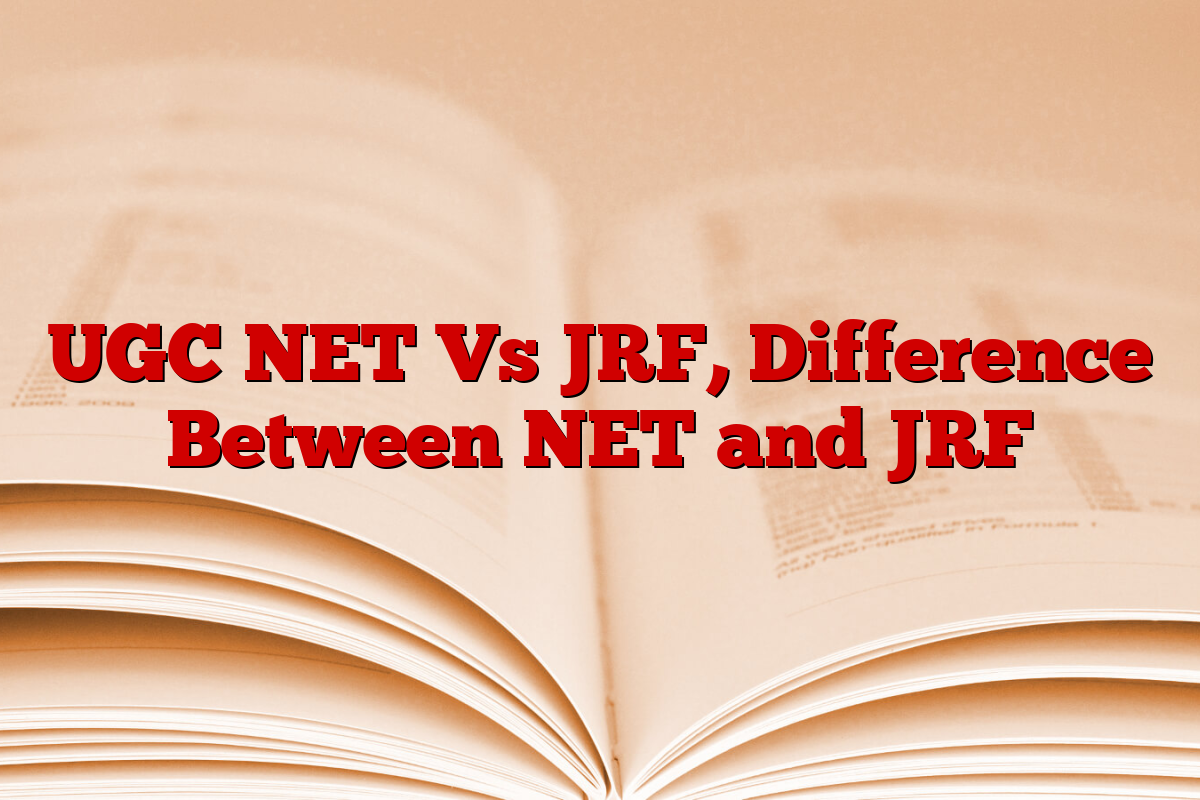UGC NET exams conducted by the National Testing Agency (NTA) serves two primary objectives for higher education candidates: Junior Research Fellowship (JRF) award for qualifying as assistant professors through National Eligibility Testing (NET) and for PhD research. While both routes are evaluated through the same examination, they vary greatly in their objectives and benefits. Understanding these major differences between UGC NET and JRF is important for candidates to make informed decisions about their educational and professional trajectory in higher education.
What is UGC?
The University Grants Commission National Eligibility Test (UGC NET) is a national level exam conducted to determine eligible candidates for the posts of Assistant Professor or both Junior Research Fellowship (JRF) and Assistant Professor in Indian Universities and Colleges. The National Testing Agency (NTA) is going to conduct the UGC NET exam.
UGC NET vs JRF: Overview
The UGC NET and JRF exam is the same exam conducted by NTA. The only difference is that you need more points to clean the JRF cut off marks than the net. The UGC NET notification for the December 2025 cycle will soon be out on the official website, the candidate wants to know more about the net. The details are mentioned in the table below.
| No. | Description | Description |
| 1. | JRF term | 3 years |
| 3. | Eligibility |
|
Difference between net and JRF
UGC NET and JRF are one of the most popular examinations initiated by the University Grants Commission (UGC). The UGC NET & JRF exam is now conducted twice a year by NTA (National Testing Agency) during the months of IE, June and January/January. If you qualify for NET exam, you are eligible for the posts of Assistant Professor or both Junior Research Fellowship (JRF) and Assistant Professor in Indian Universities and Colleges.
NTA NET is a eligibility test for the posts of Net Assistant Professor, while JRF is a competitive fellowship program provided to the successful net qualifier to support the speed of its research. While the UGC exam focuses on eligibility for teaching positions, JRF provides a platform to the candidates to advance research and contribute to their respective fields.
| UGC Net vs JRF | |
| UGC NET (National Eligibility Test) | JRF (Junior Research Fellowship) |
| The UGC NET stands for National Eligibility Test and is conducted by the National Testing Agency (NTA). | JRF – Junior Research Fellowship is a prestigious fellowship program administered by the University Grants Commission (UGC). |
| It is a national level eligibility test to determine the eligibility of candidates for the role of Assistant Professor in Indian universities and colleges. | It is provided to the candidates who qualify in the UGC NET exam and perform extraordinary research abilities. |
| UGC NET has assessed the knowledge and understanding of candidates in various subjects. | JRF provides financial assistance to selected candidates to advance research in their chosen field. |
| The qualified UGC NET allows candidates to apply for the posts of Assistant Professor in institutions across India. | JRF recipients are expected to engage in research activities, publish letters, and contribute to the advancement of knowledge. |
| The UGC NET does not automatically offer Junior Research Fellowship (JRF). | JRF holders are also eligible for lectureship positions in universities and colleges across India. |
UGC Net and JRF Cut Off Marx
To consider the JRF and/or eligibility award for the Assistant Professor, candidates need to get minimal marks as per the discussion below.
| Social class | Minimum marks (%) to be obtained | |
|---|---|---|
| Paper-I | Paper second | |
| General | 40% total marks taken simultaneously on both paper | |
| OBC-NCL/PWD/SC/ST | 35% total marks taken simultaneously on both paper | |
- All the candidates (who applied for both Assistant Professor and JRF) will be considered for JRF, from the total number of qualified candidates received in Phase IV.
- The total slots available for rewarding JRF have been allocated among various categories as per the reservation policy of the Government of India. The process for allocation of subject-wise cum class-wise allocation of JRF slots is mentioned below:
| Example | Description |
| Number of candidates to be declared qualification for JRF and Eligibility for Assistant Professor in both ‘Economics’ for Scheduled Tribes (ST) category | The number of candidates related to the ST category who have opted for JRF and have qualified for eligibility for an assistant professor in ‘Economics’ subject. (X) The total number of candidates related to the total JRF Slot ST category (of) ST category have opted for the total number of JRF and are eligible for eligibility for the assistant professor. |
According to the number of JRF slots, both papers will determine the qualifying cut-off for JRF in economics for the total percentage ST category in both papers. Similarly, the cutoff will be fixed for all subjects and categories.
sharing is Caring!

